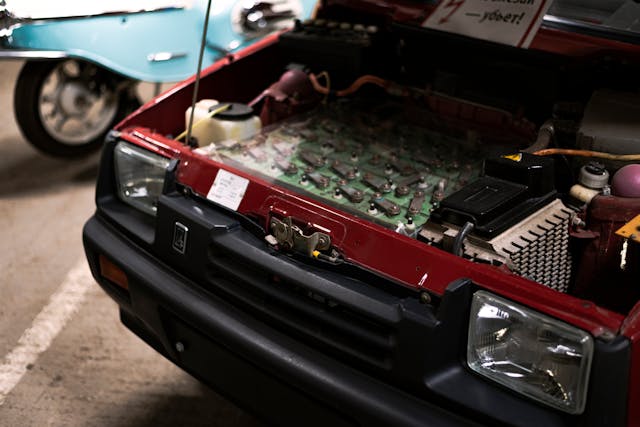Discover sensored motor solder tab vertical extensions, their design, benefits, challenges, and practical uses in RC and robotics.
When you hear the words sensored motor solder tab vertical extensions, it probably doesn’t trigger the same excitement as “AI” or “self-driving cars.” But here’s the thing: without tiny, carefully engineered parts like these, those flashy technologies wouldn’t function the way they do. It’s the small, often overlooked components, the hidden backbone, that keep entire systems from failing, much like how innovative component design drives breakthrough products in today’s competitive markets.
In the world of RC racing, robotics, and precision electronics, the solder tabs on a motor are one of those unsung heroes. And when engineers or hobbyists decide to extend them vertically, they aren’t just changing shape, they’re rewriting the rules of accessibility, durability, and performance.
This article breaks down exactly what sensored motor solder tab vertical extensions are, why they exist, how they change the game, and the contradictions they introduce. We’ll walk through the benefits, the practical headaches, and the deeper implications of a design choice that looks insignificant until you’re elbow-deep in solder.
Article Breakdown
What Are Sensored Motor Solder Tab Vertical Extensions?
At its core, a sensored motor is an electric motor equipped with sensors to track rotor position, allowing for smoother starts and precise control. These motors are a staple in high-performance remote-controlled cars, robotics, and industrial automation.
Now, the “solder tab” part comes into play. Solder tabs are the flat metal pads where wires are soldered to the motor. In a traditional setup, these tabs stick out horizontally. That works, until it doesn’t. Space constraints, heat dissipation issues, and awkward wiring angles start piling up.
That’s where vertical extensions come in. Instead of lying flat, these solder tabs are designed or modified to point upward. This small shift in orientation creates entirely new possibilities: easier soldering access, improved wire management, and reduced strain on connections.
Why Vertical Extensions Became a Thing
If you’ve ever tried to solder wires onto a motor mounted tightly inside an RC chassis, you already know why this matters. Getting the iron tip in at the right angle without burning nearby components can feel like surgery with oven mitts on.
Vertical extensions were born from necessity, not novelty. Enthusiasts and engineers wanted:
- Cleaner builds – wires running upward and neatly routed instead of awkward sideways bends.
- Reduced stress on joints – less tugging or bending on solder points during vibrations or crashes.
- Faster swaps – changing motors mid-race without dismantling half the car.
What began as a hacky modification quickly spread as a community-driven upgrade. Some motor manufacturers eventually caught on, incorporating vertical tabs into their designs to cater to demanding users.
The Engineering Perspective
From an engineering lens, vertical solder tab extensions do more than save your fingers from burns. They alter the mechanical and thermal dynamics of the connection.
Heat Considerations
A vertical tab provides better airflow around solder joints. Heat dissipates upward rather than spreading laterally into sensitive components. In high-current motors, this small difference can prevent premature failure.
Mechanical Stress Relief
Vibrations and shocks travel differently through vertical tabs. Instead of flexing sideways and risking hairline cracks at the solder joint, vertical orientations spread the stress along the axis of the wire. For RC racers hitting jumps or industrial robots facing constant micro-vibrations, this means fewer unexpected disconnections.
Accessibility Factor
It’s not just about physics, it’s about usability. Engineers often describe vertical solder tabs as “service-friendly.” When maintenance is easier, error rates drop, and uptime increases. That’s a win in any domain.
The Contradictions: Convenience vs. Complexity
Nothing in engineering is ever one-sided. For every benefit, vertical extensions bring a set of trade-offs.
- Space Efficiency
- Pro: They save lateral space, which is gold in cramped builds.
- Con: They increase vertical profile, sometimes clashing with low-clearance chassis or compact enclosures.
- Heat Dissipation
- Pro: Better heat flow around joints.
- Con: Taller solder masses can act like mini heat sinks, making them harder to heat evenly when soldering.
- Mechanical Durability
- Pro: Reduced sideways bending forces.
- Con: A strong vertical knock can snap them more easily, especially if wires are stiff.
- Aesthetic Factor
- Pro: Clean wire routing for the perfectionists among us.
- Con: The taller profile may look awkward in ultra-compact designs.
This push-pull of advantages and drawbacks is precisely why vertical extensions spark debates in forums. For some, they’re a godsend. For others, just another compromise disguised as an upgrade.
Where They Shine in Real-World Use
So who actually benefits the most from vertical extensions?
RC Racing Enthusiasts
Ask anyone who’s been on an RC track: swapping motors mid-event is a nightmare when tabs are horizontal and crammed under wiring looms. Vertical extensions make pit stops manageable, reducing downtime and keeping racers competitive.
Robotics Builders
Robotics projects often involve tight, multi-axis assemblies. A clean vertical exit for motor wires means fewer tangles, fewer interference points, and easier debugging when something goes wrong.
Industrial Applications
In manufacturing or automation, downtime costs money. Vertical tabs mean faster service, less technician fatigue, and potentially longer-lasting connections under high duty cycles.
DIY Mods vs. Manufacturer Designs
Here’s where things get spicy. Some builders swear by DIY modifications, taking standard motors and bending or extending the solder tabs upward themselves. Others insist this risks weakening the tab or introducing micro-cracks.
Manufacturers who design vertical extensions from the start have an advantage: the geometry, material thickness, and insulation are optimized. Still, not every motor on the market offers this feature, which leaves enthusiasts tinkering with makeshift solutions.
The contradiction here is clear: DIY mods give freedom but also risk. Manufacturer designs bring reliability but restrict your choices to limited models. The deciding factor often boils down to how much risk you’re willing to tolerate in pursuit of a cleaner build.
Soldering Challenges and Workarounds
If you think vertical tabs are a silver bullet, think again. Soldering onto them isn’t always easier, it’s just easier in some situations.
- Problem: Heat rises quickly, sometimes wicking solder upward instead of creating a smooth joint.
- Workaround: Use flux generously and pre-tin both the tab and wire before joining.
- Problem: Taller joints are prone to cold solder spots if heat isn’t applied evenly.
- Workaround: Use a higher-wattage iron or fine-tipped soldering station for precision.
- Problem: Added vertical profile may bump into enclosures.
- Workaround: Angle the wire exit slightly while soldering to minimize clearance issues.
Like most engineering tweaks, success is less about the part itself and more about how you work with it.
The Bigger Picture: A Tiny Part with Outsized Impact
It’s tempting to shrug off vertical solder tab extensions as a niche curiosity. But look closer, and they’re part of a broader truth in engineering: small physical changes create cascading effects across performance, usability, and reliability.
The decision to orient a solder tab vertically is a microcosm of design thinking itself. It’s about trade-offs, about asking whether ease of use outweighs added complexity. In a sense, solder tabs represent the human side of engineering, choices made not just for function but for the way people interact with machines.
Key Takings
- Vertical extensions make soldering and maintenance far easier in tight setups.
- They improve heat dissipation and reduce sideways stress on solder joints.
- They increase vertical space, which can be problematic in compact builds.
- DIY modifications bring flexibility but also risk long-term reliability.
- The value of vertical tabs depends heavily on the application: racing, robotics, or industry.
- Success isn’t just about the design, it’s about the skill of the person wielding the soldering iron.
Additional Resources:
- Motor Wiring Best Practices: Learn proven methods for wiring motors to minimize resistance, maximize durability, and simplify maintenance.
- Advanced Soldering Techniques: Discover advanced soldering methods, tools, and troubleshooting tips to achieve perfect joints every time.



